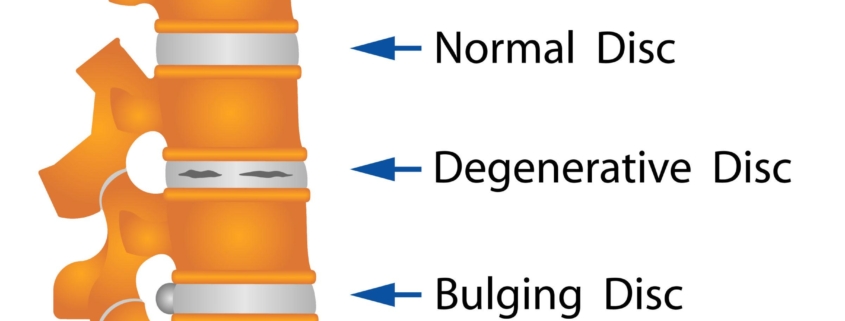
Degenerative Disc Disease
Overview
Degenerative Disc Disease (DDD) is not so much a “disease” as it is a condition caused by the wear and tear of your spinal discs as you age. The spinal discs act as shock absorbers between the bones of the spine and can wear down over time, leading to discomfort and limited mobility. This condition impacts an estimated 30% of people ages 30-50.
Types
While Degenerative Disc Disease primarily affects the discs in the lower back or lumbar spine, it can also occur in the neck or cervical spine. The two main types of DDD are:
-
- Lumbar degenerative disc disease: This type impacts the lower back and can result in sciatica (leg pain).
-
- Cervical degenerative disc disease: This affects the neck and can lead to pain in the neck, shoulders, and arms.
Causes
Degenerative Disc Disease occurs due to the natural age-related changes in your spinal discs. Other risk factors include:
-
- Smoking
-
- Obesity
-
- Physical labor or a sedentary lifestyle
-
- Traumatic injuries
Symptoms
The symptoms of Degenerative Disc Disease may vary but typically include:
-
- Lower back pain that worsens when sitting or activity that involves bending, lifting, or twisting
-
- Pain that improves when walking or moving
-
- Pain that worsens after standing or walking for long periods
-
- Numbness and tingling in your extremities
-
- Muscle weakness
Diagnosis
Diagnosing Degenerative Disc Disease usually involves a physical exam and imaging tests. Your physician will check your flexibility, range of motion, and the extent of your pain. They may also order:
-
- X-rays
-
- MRI scan
-
- CT scan
Treatment Options
Treatment typically focuses on managing symptoms and improving quality of life. This may include:
-
- Conservative treatments, such as physical therapy, pain relief medication, and lifestyle changes like weight loss and quitting smoking
-
- Surgical approaches, if conservative treatments don’t work, such as disc replacement or spinal fusion
Living With Degenerative Disc Disease
Living with Degenerative Disc Disease can be challenging, but effective management can help. Consider:
-
- Continuing physical activity: It may help to keep moving even when you have discomfort. This can maintain your muscle strength and flexibility.
-
- Practicing good posture: Ensuring that you maintain a correct posture can help reduce the strain on your spine.
-
- Eating a healthy diet: Regular exercise and maintaining a healthy weight can help manage symptoms.
-
- Stress management: Stress can worsen symptoms. Try to incorporate mindful practices like yoga or meditation into your daily routine.
When to Seek Help
While Degenerative Disc Disease is a chronic condition, certain symptoms warrant immediate medical attention:
-
- If you experience severe pain that doesn’t improve with rest.
-
- If you experience numbness or weakness in your legs or trouble walking.
-
- If you lose control over your bowels or bladder, seek immediate medical attention.
Remember, it’s essential to communicate openly with your doctor about any symptoms you experience and explore treatment options that best manage your particular case. Learning about your condition, staying active, and engaging in self-care practices can empower you to lead a fulfilling life with Degenerative Disc Disease.
